Itinerary
Corsica’s northern capital, Bastia, is the centre of commerce and industry and a thriving freight and passenger port. Commerce, more than tourism, is its main focus, providing employment for many Corsicans. Bastia’s industrial sprawl, however, is offset by its aged charm. The presence of an overwhelming Italian atmosphere adds to the city’s attraction. Two distinct areas comprise the city: Terra Vecchia, the old quarter, consisting of haphazard streets, flamboyant Baroque churches and lofty tenements, with their crumbling golden-grey walls set against a backdrop of fire-darkened hills; and the more orderly Terra Nova, the historic district favoured by prominent doctors, lawyers and architects. The city dates from Roman times, when a base was set up at Biguglia to the south. Under the Genoese, Bastia was the island’s capital for four centuries and of major importance for the export of wine to the Italian mainland. They built a fortress (bastiglia), which gave the town its name. The Genoese also were responsible for laying the foundation for the area’s prosperity by planting vines, olives, chestnut trees and other experimental crops. This resulted in an energetic and enterprising region, still a characteristic of today’s northern Corsica. Although Napoleon had appointed Ajaccio the capital of the island in 1811- initiating a rivalry that still exists – Bastia established a stronger trading position with mainland France. As a result, the Nouveau Port was created in 1862 to cope with the increasing traffic with France and Italy. Bastia’s economic prominence and a German division based here during World War II accounted for severe bombing attacks. Many buildings were destroyed, including much of the old governor’s palace. Of the two largest towns on the island, Ajaccio and Bastia, the latter boasts a more genuine Corsican character. Visitors can experience an authentic feel of island life by wandering through the maze of narrow streets of Bastia’s old quarter and by exploring its fortifications. Don’t miss the vast Place Saint-Nicolas just north of the old quarter; it is the focal point of the city. Open to the sea and lined with shady trees and sidewalk cafes, it is a perfect place for people watching and for taking in the local ambiance. Pier Information The ship is scheduled to dock at the port of Bastia. The city’s focal point, Place Saint-Nicolas, is a distance of 650 feet (200 metres) to walk. Taxis are generally available at the pier but it is highly recommended to book in advance if you want to be sure to get one. It is recommended to establish the fare before leaving the port. Shopping The main shopping streets, Boulevard Paoli and Rue Cesar Campinchi, are less than one half miles (500 metres) from the port terminal. Handicrafts and the area’s specialties such as honey, wine and liqueurs may be of interest. Most shops are open from 9:00 a.m. to 12:00 p.m. and 2:30 p.m. to 7:00 p.m. Shops are closed for the day on Sundays and some shops may also close Monday mornings (some souvenirs shops may open Sundays during the high season of July-August). The local currency is the euro. Cuisine A variety of restaurants offer a good choice of eating possibilities. Some of the best restaurants are found around the Vieux Port and on the Quai des Martyrs. French cuisine and seafood feature prominently on menus as well as such Corsican specialties as wild boar, charcuterie and aziminu, a local version of bouillabaisse. Evidence of Bastia’s strong Italian influence is apparent in the numerous pizza and pasta places in the Nouveau Port area. For outdoor dining and people watching, cafes around lively Place Saint-Nicolas are a perfect place. Other Sites Oratoire de Saint-Roch Located in the Terra Vecchia quarter, the chapel is a Genoese Baroque extravaganza built in 1604. The walls are covered with finely carved wooden panelling and the organ is magnificent with its decoration of gilt and wooden sculpture. Oratoire de L’Immaculee Conception Although its exterior is rather austere, the flamboyant interior of this 17th-century church with gilt and marble ceiling, frescoes and crystal chandeliers creates an ambiance of an opera house. Vieux Port Site of the original Porto Prado, the area around the Vieux Port is the most appealing part of town. Its soaring houses seem to bend inwards towards the water. Once busy with Genoese traders, the building of the ferry terminal and commercial docks have reduced much of the action at Vieux Port. Terra Nova As the administrative core of old Bastia, Terra Nova displays a distinct air of affluence. Its most impressive building is the 14th-century Governor’s Palace. During the Genoese heyday the governor and the bishop lived here, entertaining foreign dignitaries and hosting massive parties. Private arrangements for independent sightseeing may be requested through the Tour Office on board, subject to the availability of English-speaking guides.
Elba is the Tuscan archipelago’s largest island, but it resembles nearby verdant Corsica more than it does its rocky Italian sisters, thanks to a network of underground springs that keep it lush and green. It’s this combination of semitropical vegetation and dramatic mountain scenery—unusual in the Mediterranean—that has made Elba so prized for so long, and the island’s uniqueness continues to draw boatloads of visitors throughout the warm months. A car is very useful for getting around the island, but public buses stop at most towns several times a day; the tourist office has timetables.
Calvi, Corsica’s slice of the Riviera, has been described by author Dorothy Carrington as “an oasis of pleasure on an otherwise austere island.” Calvi prospered by supplying products to Genoa; its citizens remained loyal supporters of Genoa long after the rest of the island declared independence. Calvi also claims to be the birthplace of Christopher Columbus. During the 18th century the town endured assaults from Corsican nationalists, including celebrated patriot Pasquale Paoli. Today Calvi sees a summertime invasion of tourists, drawn to the 6-km (4-mile) stretch of sandy white beach, impressive citadel overlooking the Old Town, lively restaurants, and buzzing nightlife.
Considered Corsica’s primary commercial and cultural hub, the largest city and regional capital of Ajaccio is situated on the west coast of the island, approximately 644 km (400 miles) southeast of Marseille, France. Founded in 1492, vestiges of ancient Corsica in this ville impériale revolve around the city’s most famous son, Napoléon Bonaparte, whose family home—now the national museum Maison Bonaparte—pays tribute to the emperor’s historical influence.Remnants from what was originally a 12th-century Genoese colony are still visible around the Old Town near the imposing citadel and watchtower. Perfect for exploring, the luminous seaside city surrounded by snowcapped mountains and pretty beaches offers numerous sites, eateries, side streets, and a popular harbor, where sailboats and fishing vessels moor in the picturesque Tino Rossi port lined with well-established restaurants and cafés serving fresh local fare.
A tourist-friendly town of about 45,000 inhabitants with a distinctly Spanish flavor, Alghero is also known as “Barcelonetta” (little Barcelona). Rich wrought-iron scrollwork decorates balconies and screened windows; a Spanish motif appears in stone portals and bell towers. The town was built and inhabited in the 14th century by the Aragonese and Catalans, who constructed seaside ramparts and sturdy towers encompassing an inviting nucleus of narrow, winding streets with whitewashed palazzi. The native language spoken here is a version of Catalan, not Italian, although you probably have to attend one of the Masses conducted in Algherese (or listen in on stories swapped by older fishermen) to hear it. Besides its historic architectural gems such as the Alghero Cathedral and Palazzo d’Albis, the fortified city is well worth a visit to simply stroll and discover local culture on narrow cobblestone streets. The city also has a reputation to serve great food at reasonable prices.
Located in the South of Corsica, Bonifacio is one of the island’s most beautiful destinations. From its breathtaking views and sandy white islands to its historic citadel, the city is a must visit for anyone travelling to the island.
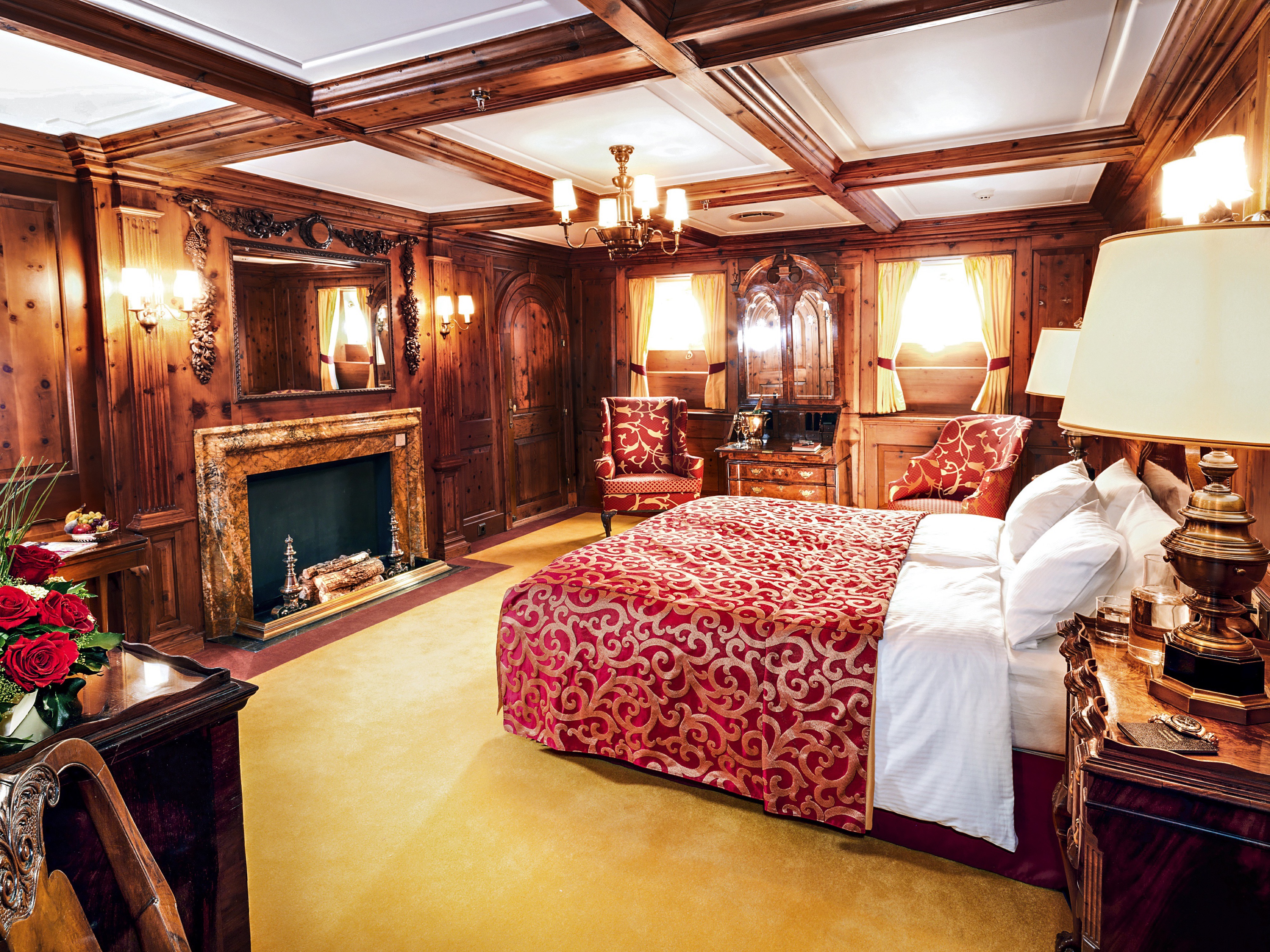
Cabin 1 – Probably the most legendary ship’s cabin ever. Marjorie has furnished the luxury suite herself. Whenever she traveled with the SEA CLOUD, these rooms were her home. Fireplace and bathroom in white Carrara marble, gold-plated swan necks as fittings, valuable Louis Philippe chairs, a large bed of varnish in old white decorated with gold, elaborate ceiling ornaments and a room-high dressing mirror: the furnishings she selected with exquisite taste reflect the successful American entrepreneur’s desire to spend time on her private yacht in a luxurious ambience.
Cabin 2 – In addition to her exquisite taste, Marjorie’s attention to detail is evident in the interior of the owner’s cabins. This is also reflected in the suite of her first husband Edward Hutton, who gave her the unique SEA CLOUD as a gift. The maple wood panelling gives the cabin a feeling of warmth and solidity; the light coffered ceiling gives the room a certain lightness. Special highlight: Edward Hutton’s beautiful “Bureau Bookcase” secretary with mirrored glass.
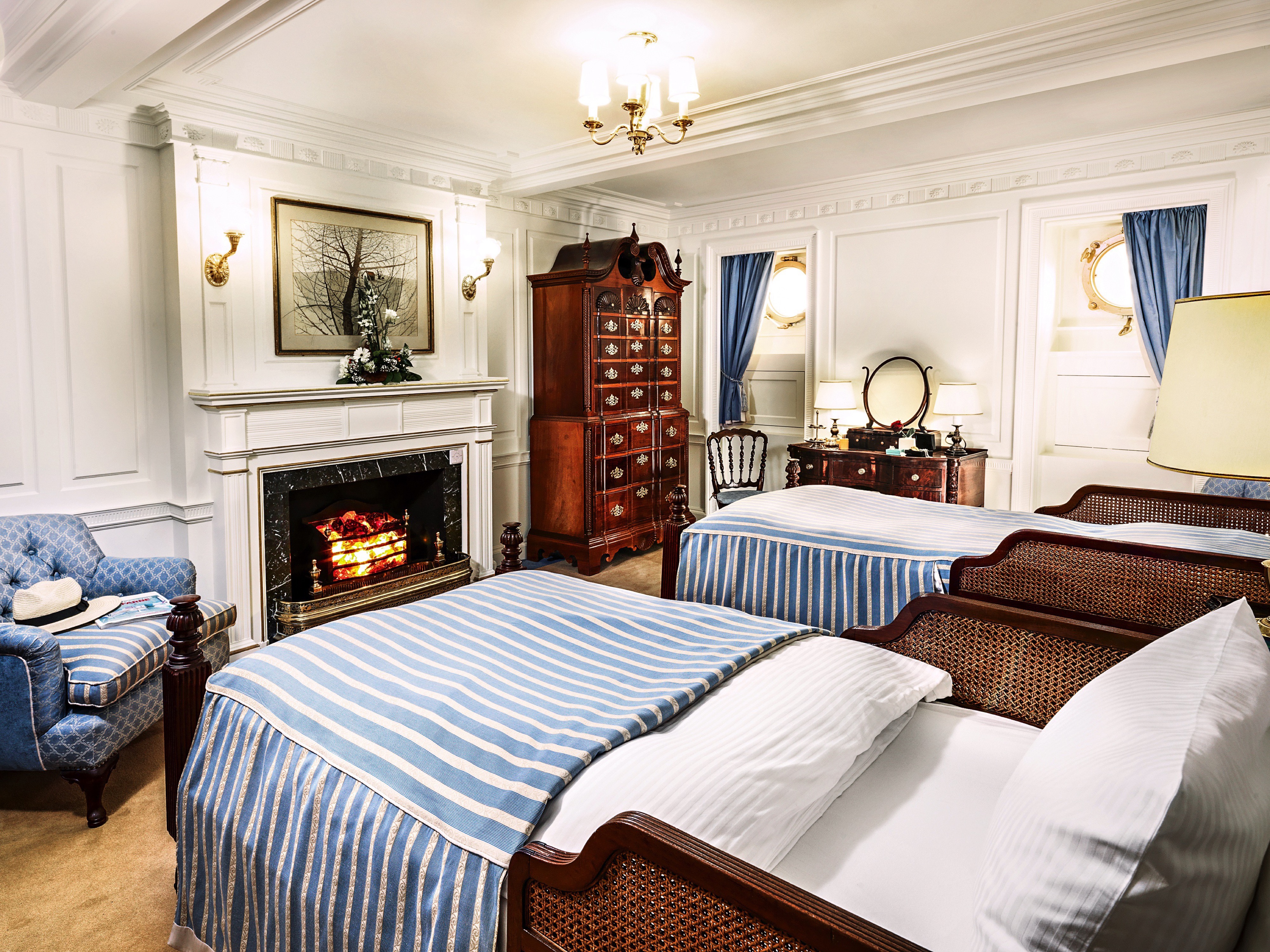
Cabin 3 – The original guestrooms reflected the generous hospitality of the Huttons. Each of these cabins was individually designed with carefully selected furniture and precious materials. The original colonial-style cabin no. 3 with its comfort is a testimony to this tradition. Famous personalities from the nobility, business and show business have already bedded their heads in this and the other spacious original cabins.
Cabin 4 – During the construction period of the SEA CLOUD in Kiel and later, when Marjorie already lived on board, she collected precious antiques all over the world. The original cabin No. 4 is one of the many examples of how skillfully she integrated the valuable pieces into the interior of her private yacht.
Cabin 5 – Marjorie’s declared goal was to make her family and her guests feel at home every minute on board the SEA CLOUD. Accordingly, she has designed the rooms like this de luxe original cabin to be spacious and comfortable. Spacious antique mahogany chests of drawers, marble in the bathroom and by the fireplace and antique unique pieces spread a cosy elegance.
Cabin 6 – Every vacation on the SEA CLOUD is also a journey through time. As in all original cabins, in this de luxe cabin you will feel transported back to the time of the elegant world customer of the 1930s. The selected antique mahogany furniture is small and delicate. Thanks to the color selection of the fabrics, the room has an extremely warm, sunny and light atmosphere.
Cabin 7 – As the first owner, Marjorie also furnished the SEA CLOUD with so much love for detail because she wanted to offer her daughter Dina Merrill a wonderful and safe home on board. This is especially noticeable in cabin no. 7: here Dina spent a large part of her childhood. The furniture made of fine maple has mahogany inlays. The unusual floor plan with the sloping fireplace makes the cabin appear even larger.
Cabin 8 – The original guestrooms reflected the generous hospitality of the Huttons and still contain the soul of the SEA CLOUD. Cabin no. 8 is a fine example for the character of the exclusive private yacht as which the ship was designed from the very beginning.
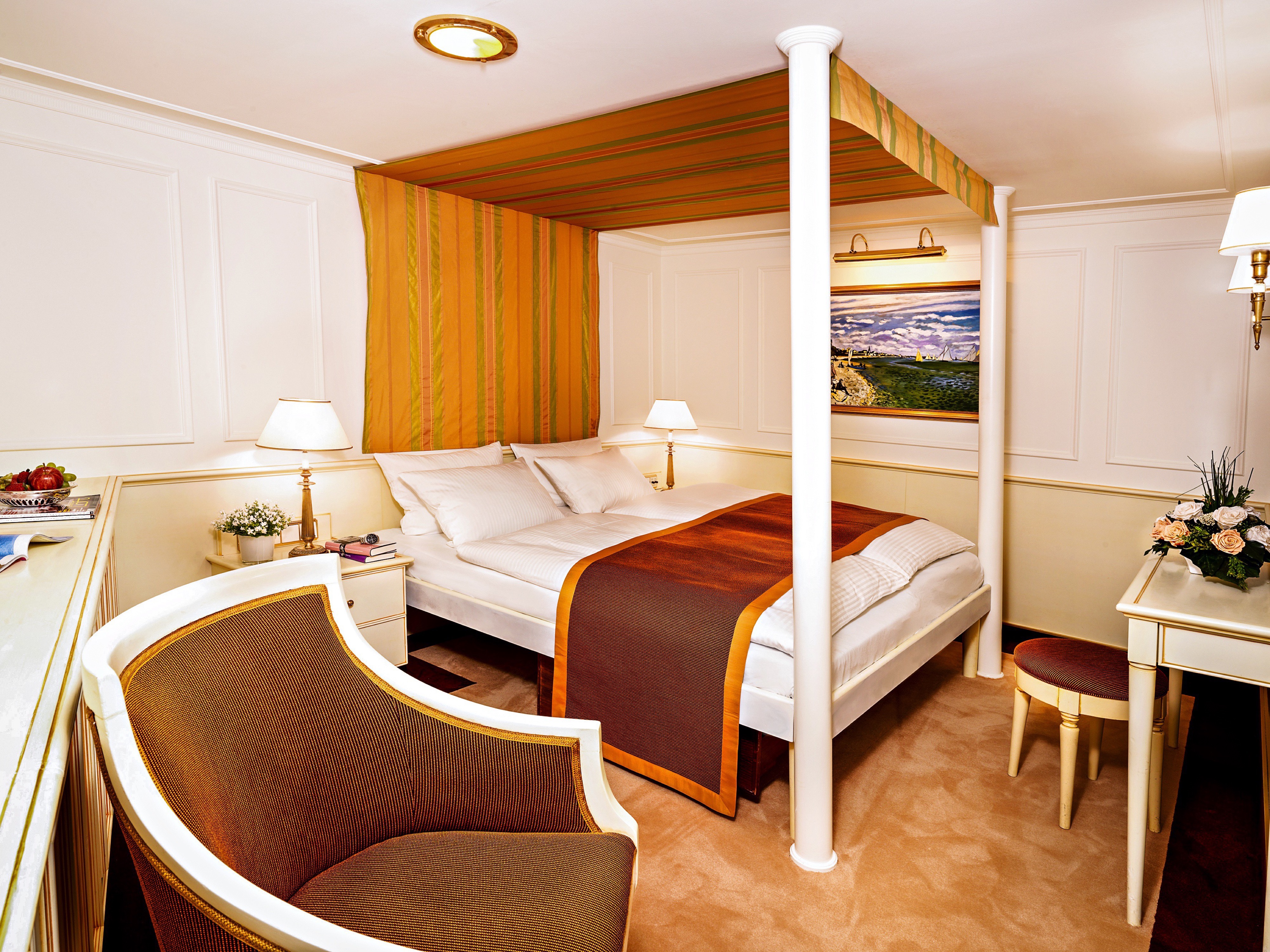
Cabins 9 and 10 are located in the original area on the main deck. Both rooms were redesigned into large De-Luxe outside cabins. The design is based on historical models with a modern accentuation and is kept in warm fabrics and wood tones. Both cabins are located at the end of the original area and are connected to the promenade deck by a separate staircase.
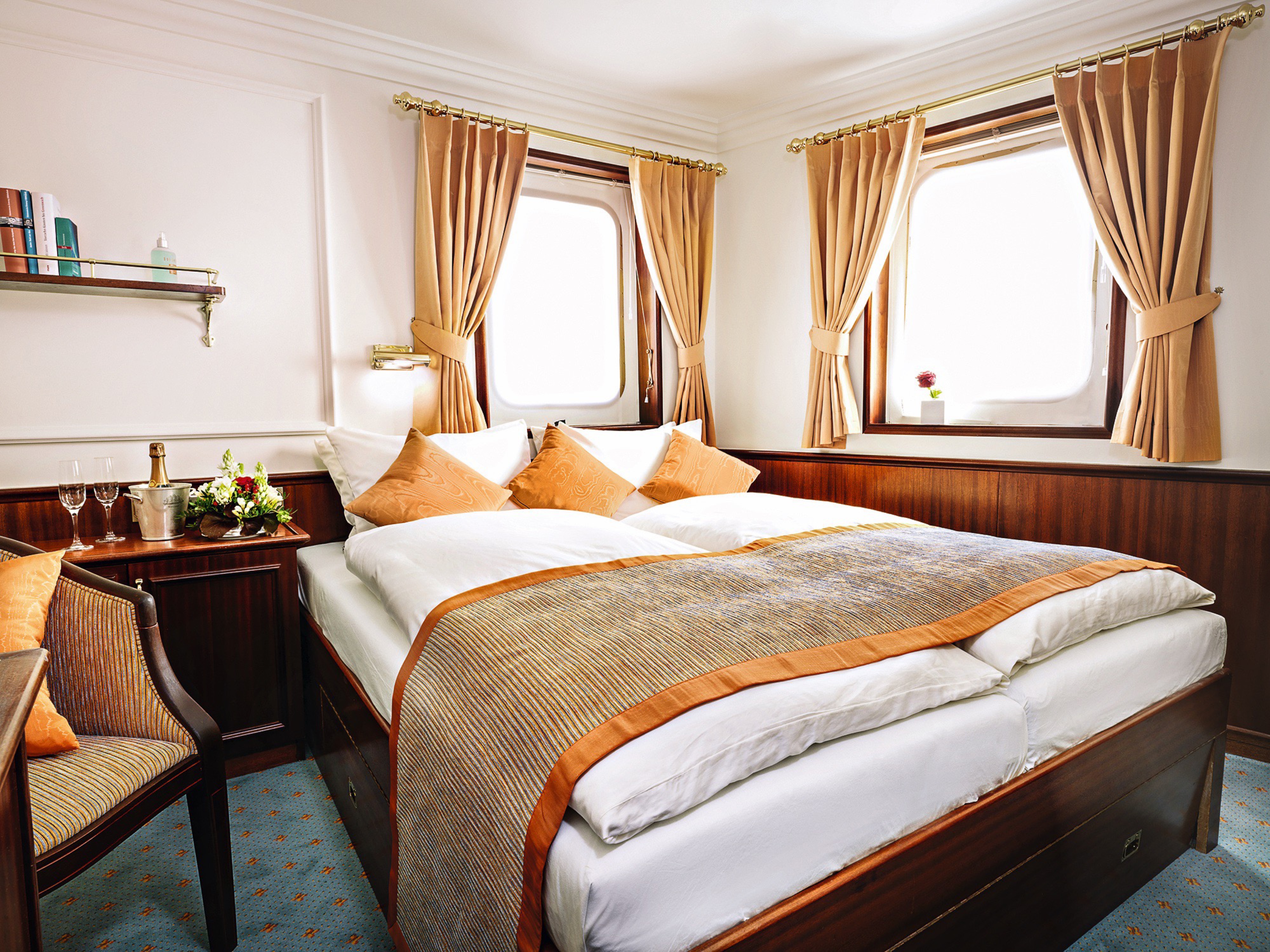
Like all the cabins on the captain’s and lidodeck, these two rooms were only built in the late 1970’s and offer a great deal of comfort. Their outstanding feature is the panoramic windows placed over the corners, which make the overall impression bright and friendly.

Even though the cabins on the captain’s and lidodeck were harmoniously integrated into the SEA CLOUD only later, they naturally follow the standards set in the original area. Their tasteful interior design is a contemporary interpretation of the interior designed by Marjorie Merriweather in the 1930s. The comfortable interior corresponds with the wonderful view of the wide sea.
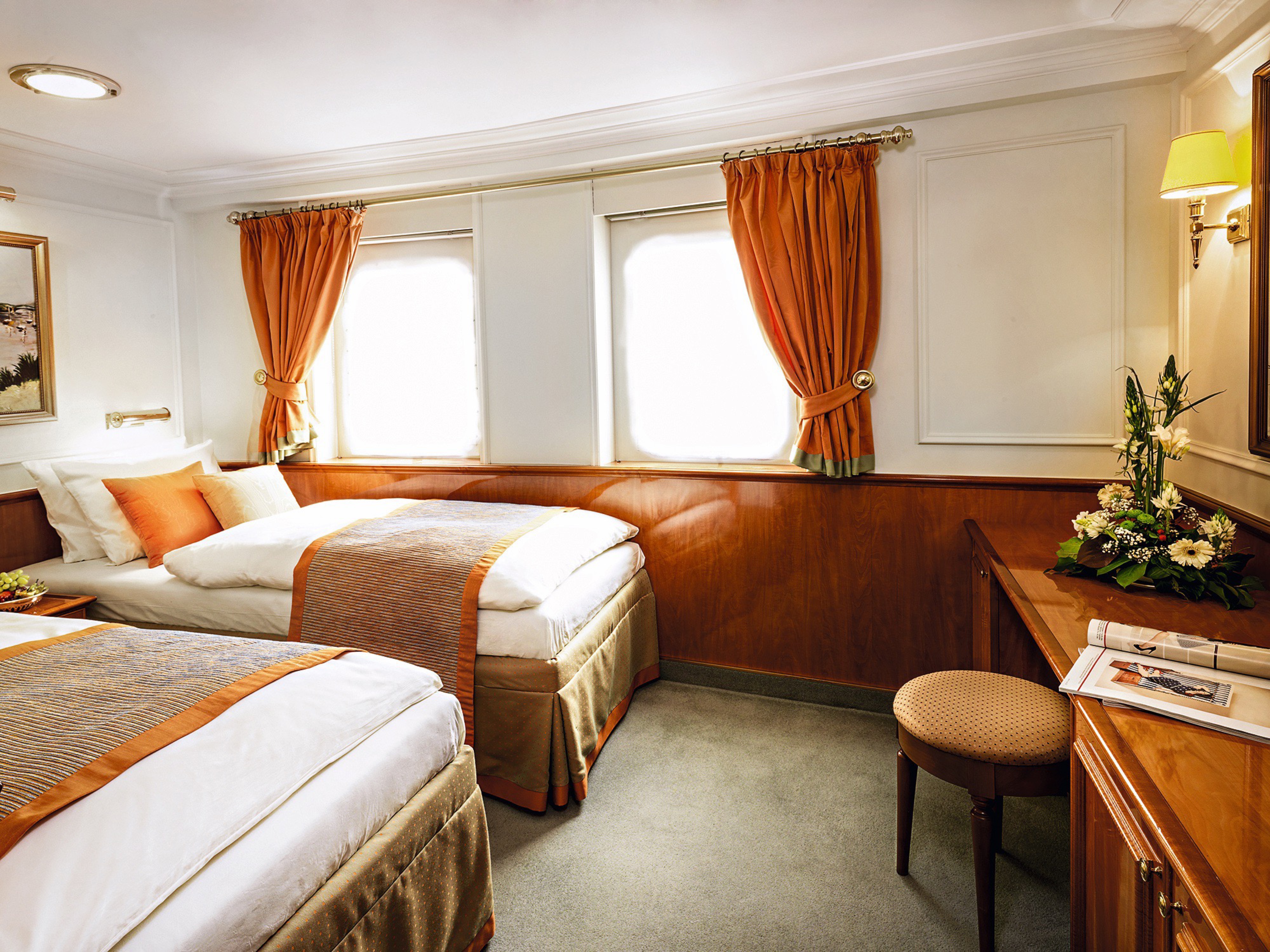
These comfortable cabins have a special maritime charm due to their location between the manoeuvring stations for hoisting and lowering the sails. The deckhouse, which was added during the renovation of the SEA CLOUD, is an oasis of peace, but due to its location on the promenade deck, the cabins are also only one step away from the restaurant and lounge in the superstructure amidships.
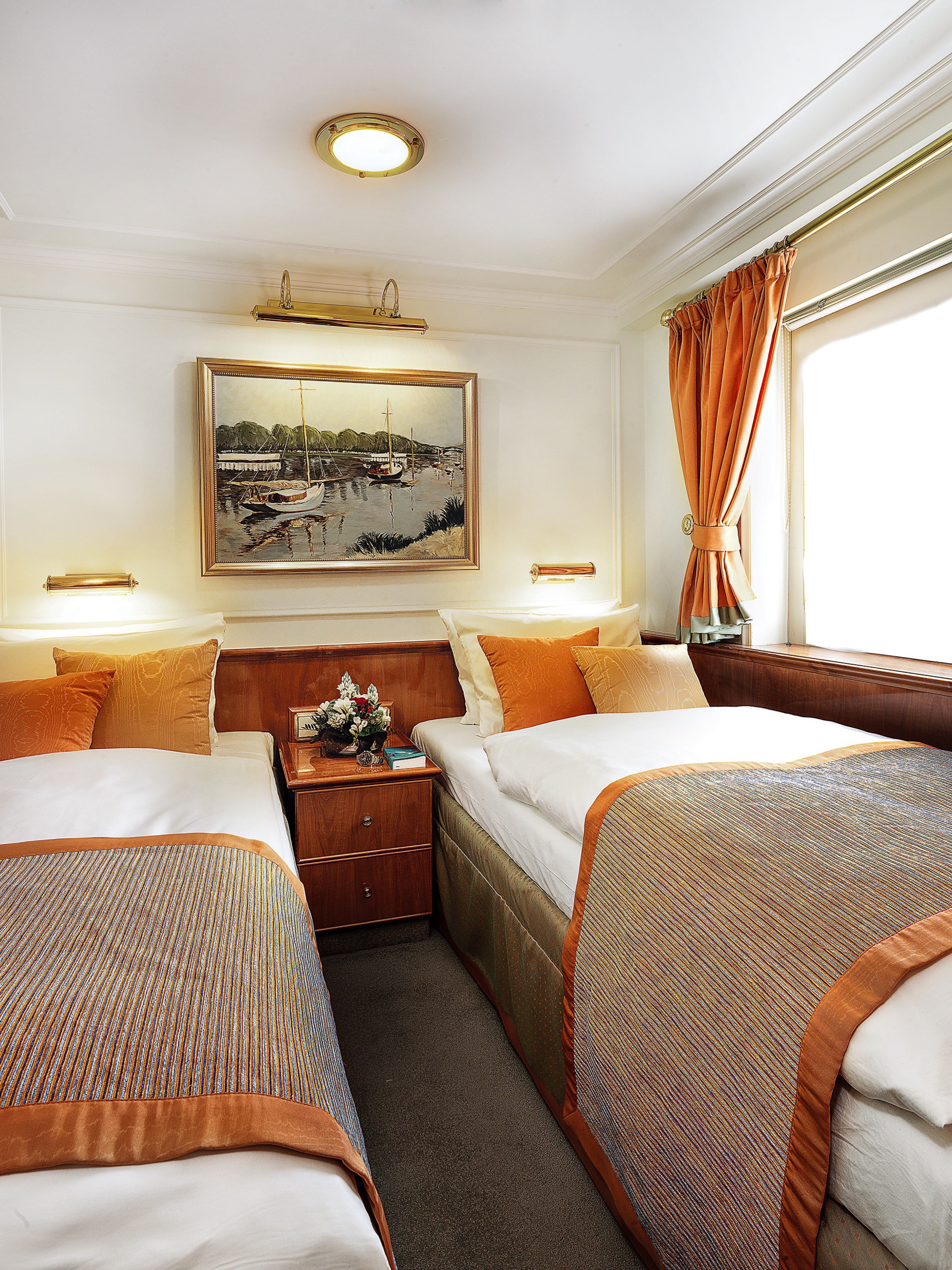
In addition to the comfort and luxury that characterize the SEA CLOUD, both cabins offer a special feature: the most charming place on the tall ship – the so-called Blue Lagoon – can be reached directly from them. The semi-circular, blue cushions that give the ship its name are the traditional place on board for relaxing sunbathing or – at night – for a dreamy view of the impressive starry sky above the ocean.
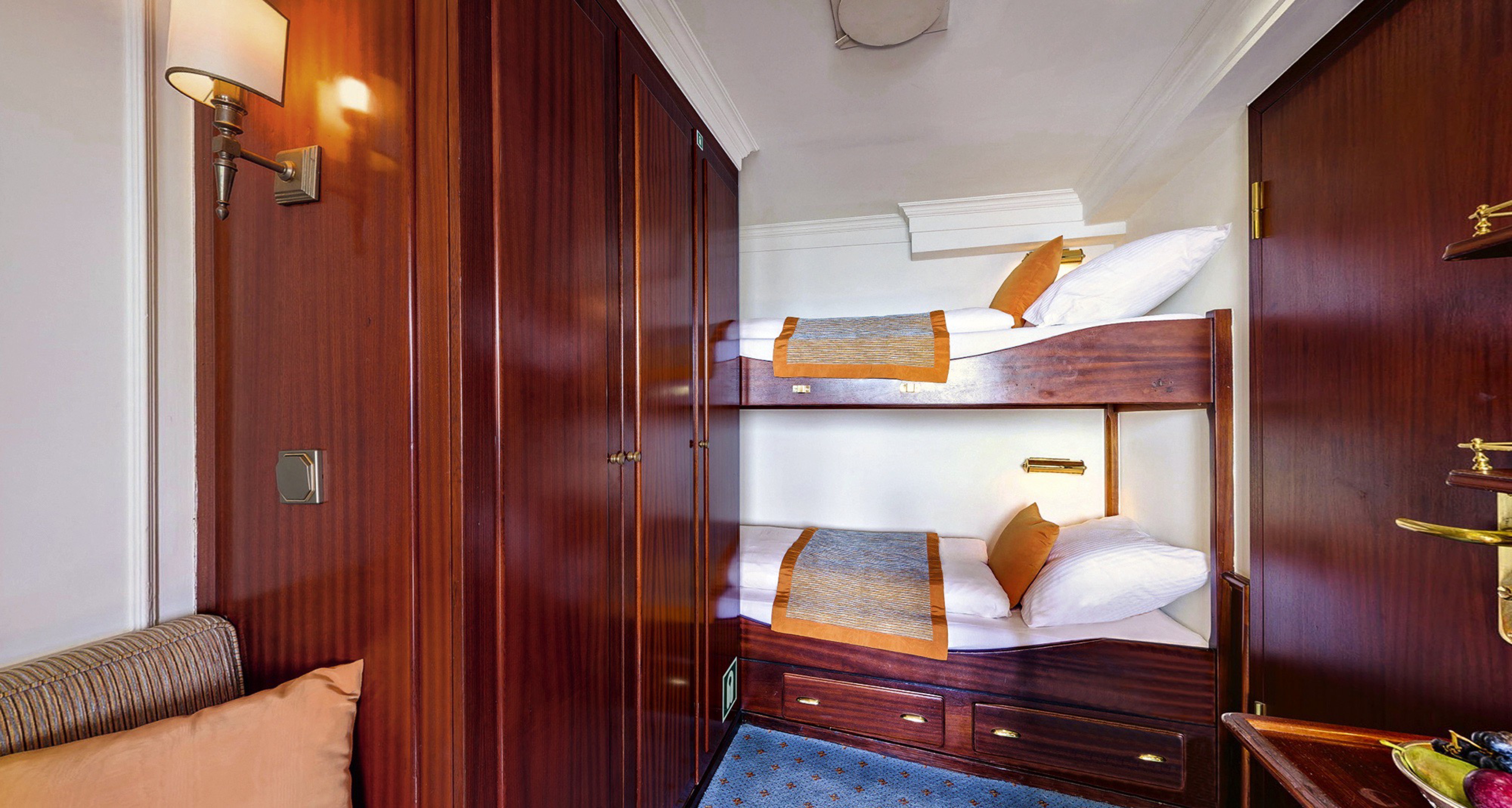
These cabins are the right place for sailing enthusiasts. In Marjorie’s time, the officers of the SEA CLOUD were accommodated here. Their furnishings are correspondingly nautical. The clou: The doors of the cabins below the bridge deck lead directly to the promenade deck, so that at night you can sleep in the perfect maritime ambience with open doors and fresh air.

Guaranteed double cabins: The range of accommodation starts from Cat. 5. You will receive your exact cabin number when arriving on board. The allotment for this category is very limited.
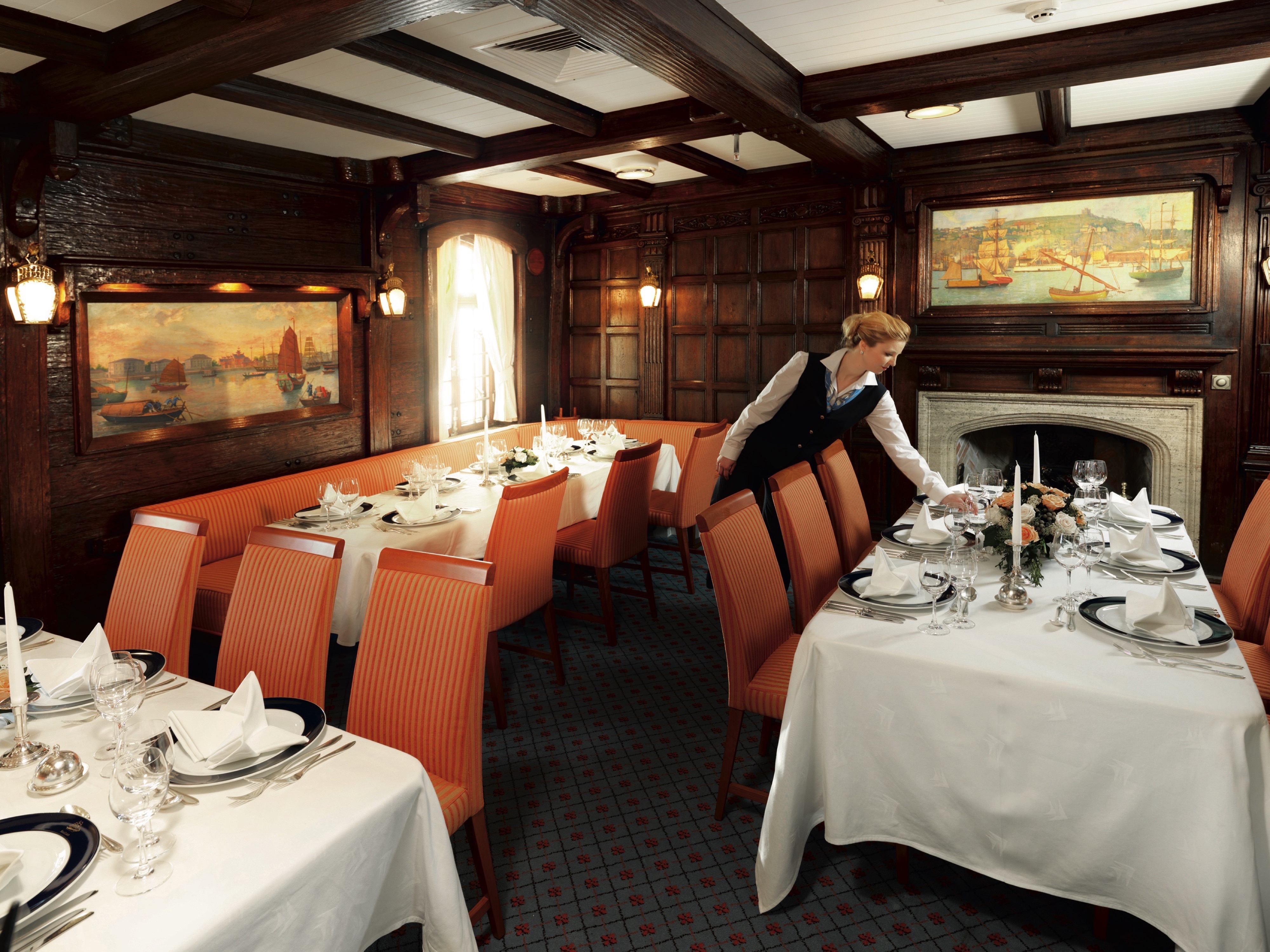
Sea Cloud’s dining room is panelled in warm woods and hung with original oil paintings. It is on the Promenade Deck, in Sea Cloud’s former salon, where Marjorie Merriweather Post received her guests. The chefs come from renowned, first-class restaurants, and offer fresh, contemporary cuisine inflected with regional flavours. They use fresh ingredients sourced locally, from sustainable providers whenever possible. By adding local flavours to a menu that also includes traditional favourites, the chefs aim to give you a greater sense of the cuisine and culture in the region you’re exploring. An array of fresh fruits and delicious, fresh juices are key components of the breakfast buffet. Wines from well-known regions are served with lunch and dinner, and are included in the expedition price. There are fish or meat choices at every meal.
There’s no assigned seating in the dining room; in fact, many tables accommodate uneven numbers. This makes for easy mingling and the fun of sharing breakfast, lunch, or dinner with different new friends, or staff. And independent travellers can count on a welcome everywhere they turn.
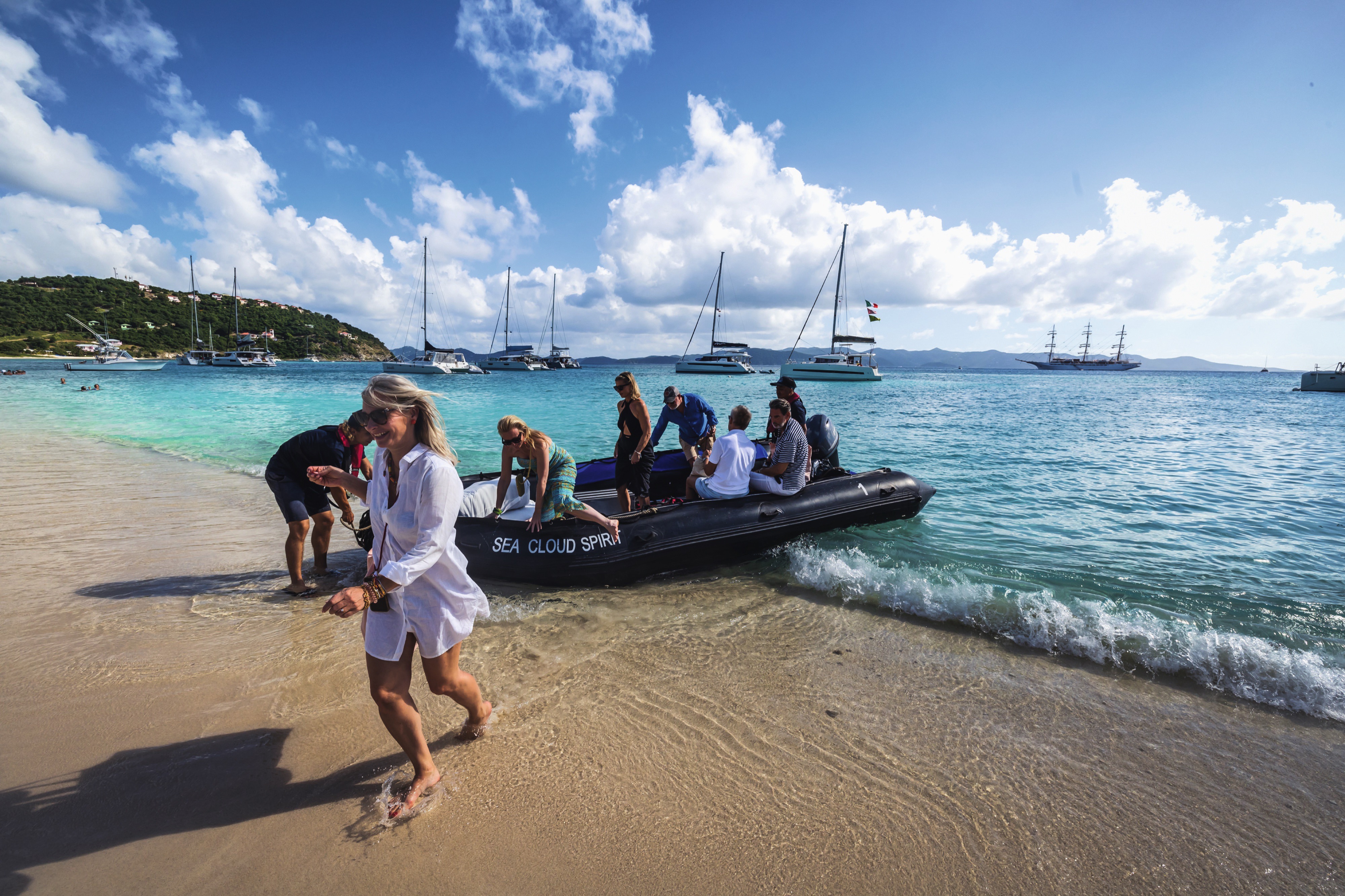
Smaller ships, greater possibilities
Among the many joys of travelling smaller: a quick spin on a zodiac, enjoying the beach barbeques in secluded bays, photo safaris, pausing for a dip in the azure sea. And on selected tours, some exclusive experiences are included – a private concert, an opera house or a palace tour, a culinary visit to a special vineyard, or a front-row seat at a legendary regatta.

Dive in and be active
Whether you want to start your swim directly from the ship or explore the colorful world on the reef – water sports are even more fun under the Caribbean sun. Equipment is available for everyone: Snorkels, fins and stand-up paddles are waiting for you. If you are in the mood for even greater action, let yourself be glided across the crystal clear waters by tubing in the Caribbean.
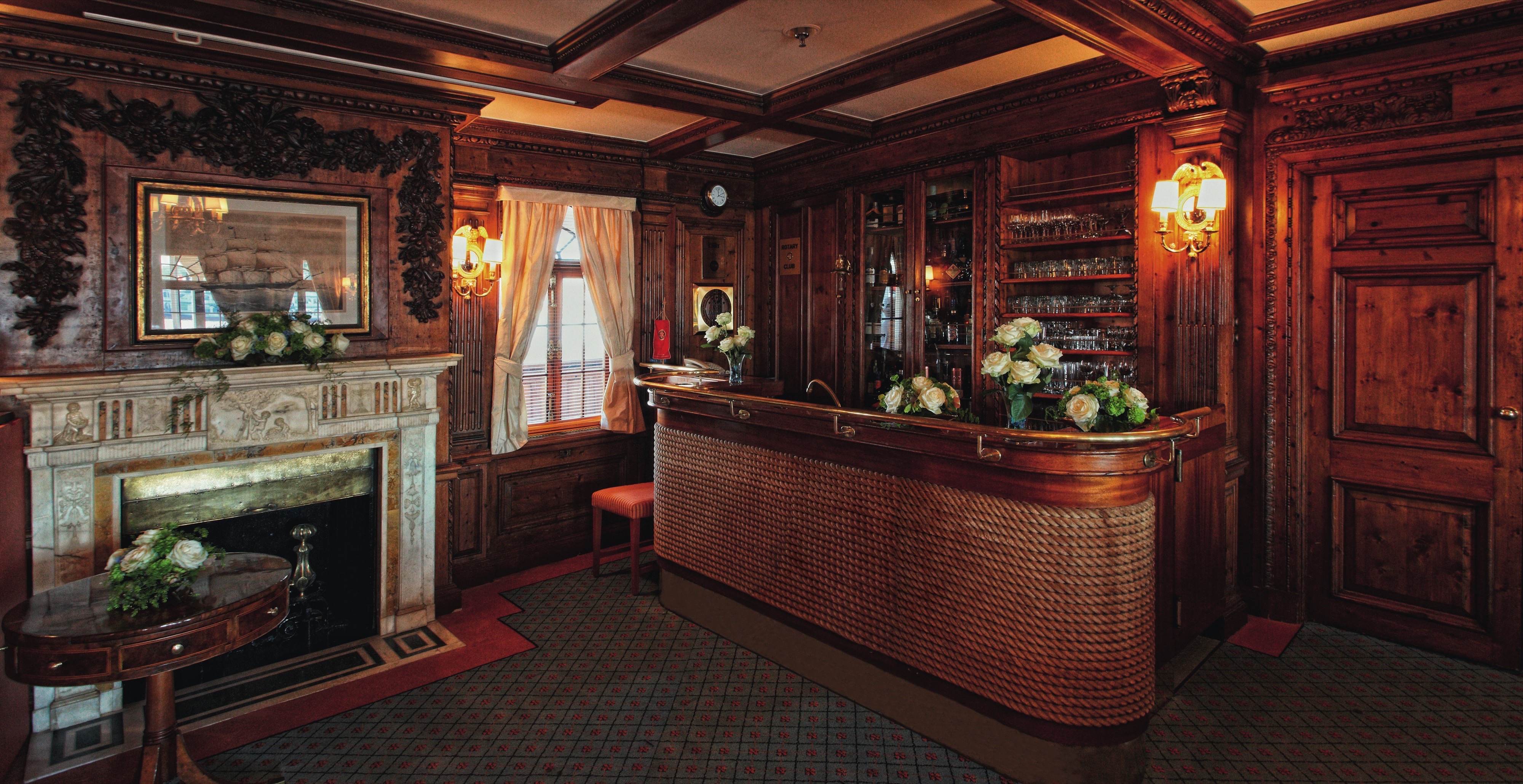
Selected picture books, high-quality literature, popular board games and a writing desk with a laptop can all be found in the cosy lounge on the promenade deck.

If the weather is fine, you might like to sit on the lido deck at lunch time. The tasty snacks served at the buffet in the open air will both whet and satisfy your appetite. At certain times, our onboard pianist will provide pleasant background music to your conversations. The lido bar is a cosy place to wind down the evening. Quite befitting for any traditional sailing ship, the atmosphere can also get rather vibrant when the Crew Shanty Choir makes an appearance.
Not only is the promenade deck a quick route from one end of the ship to the other; in good weather, you will also find some very tasty refreshments there. The coffee, tea and light snacks are ideal for those who rise early, but also to provide sustenance in the afternoon between meals. Just imagine a freshly made waffle with ice cream under the white sails of a ship – that really is pure paradise!
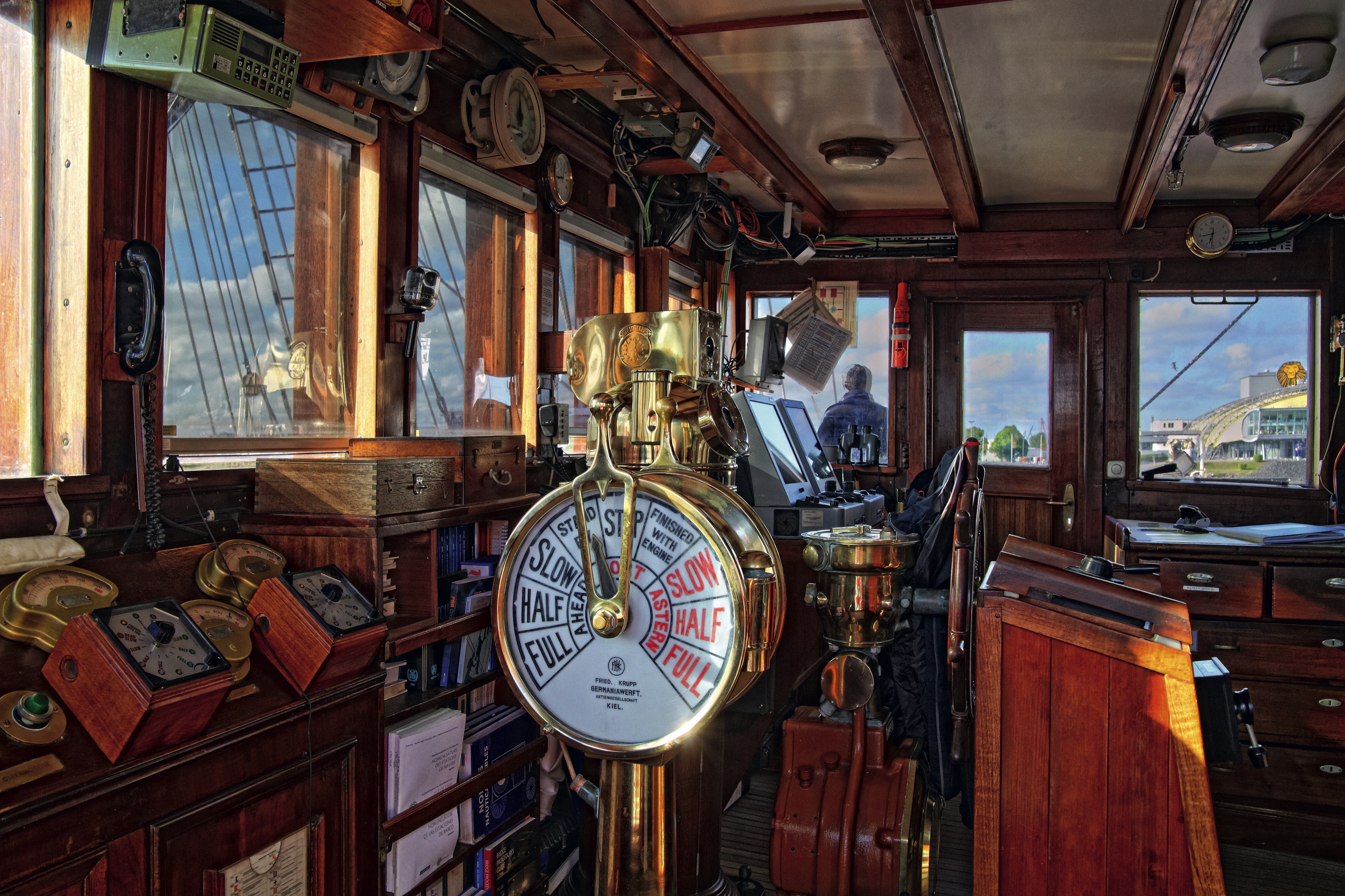
Excellent views of the sea and the 30 majestic sails can of course be enjoyed from the SEA CLOUD’s bridge, where a range of historic nautical instruments almost conceal the modern technology. Operational circumstances permitting, the officers on the bridge will also be happy to answer questions about “their” sailing ship.
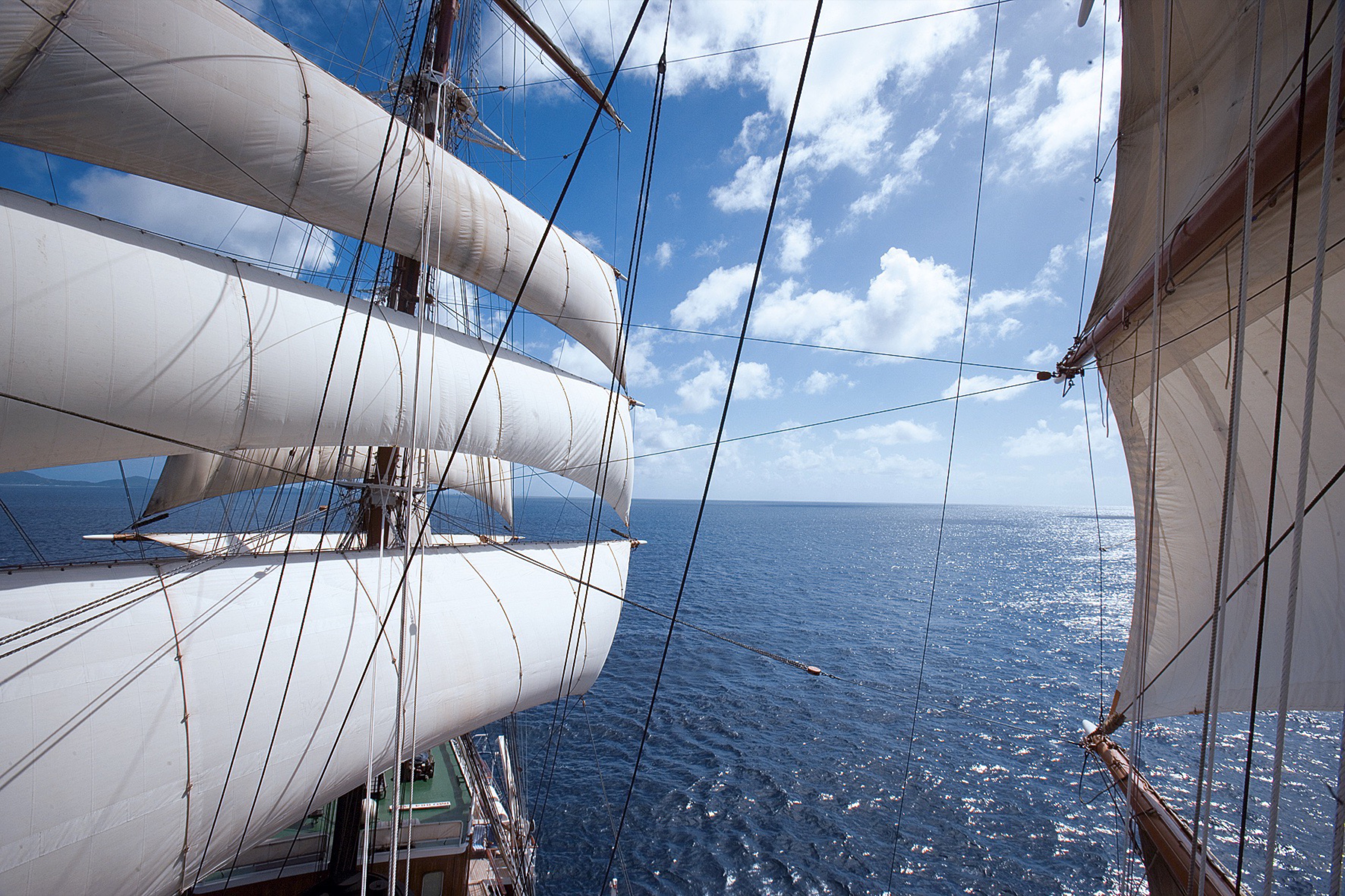
On board the SEA CLOUD there are many wonderful spots where you can relax and unwind: from countless deckchairs, to elegant mahogany benches and the blue lagoon, where you can gaze up at the masts. Watching the movement of the sails and all the traditional tasks associated with a majestic sailing ship is one of the most wonderful activities on the high seas. The traditional rules of cruise travel might be thrown overboard; on board the SEA CLOUD you can travel the way you prefer. If you like, you can jog around the outer promenade deck or borrow snorkelling equipment for a trip ashore. The SEA CLOUD’s onboard zodiac boats do not just take you ashore and back but are also used to tow “Fun Island”, our inflatable water sled. And when conditions are calm enough, the gangway becomes a direct access point for the most beautiful swimming pool in the world: the sea.
The chef will happily accommodate special diet requests—please let us know about any requests in advance so that we may prepare.
During the day, and depending on the weather, a sophisticated summer look is suitable. For the evening, we recommend smart-casual wear. We also kindly request that guests refrain from wearing shorts at evening meals. The Captain’s Dinner (an event which normally takes place twice on each trip – once on short cruises) is a time when our guests tend to opt for a more elegant look. We recommend a suit for men and appropriate smart dress for women. Please remember to take some non-slip shoes with you.
Our tall ships SEA CLOUD and SEA CLOUD II are not accessible for all people with disabilities and are not suitable for wheelchair users. Please contact our cruise consultancy for further details.
Smoking is permitted only on the outer decks outside of meal times. We kindly request that smokers take the comfort of other passengers into consideration. Smoking is prohibited on the blue lagoon deck and covered areas of the spanker and lido deck at all times.
A laptop is available for use on board in the lounge (SEA CLOUD) or in the library (SEA CLOUD II). You can use this laptop or your own laptop to connect to the internet (Wi-Fi) using the access code, however please note that there is a charge for this. The code can be obtained from reception or the purser.
Laundry services available on board are limited to washing and ironing. There is no dry-cleaning available. The washing and ironing service is provided at an additional charge and is carried out overnight. For guests with bookings in Cat. A-C (SEA CLOUD) or Cat. A+B (SEA CLOUD II), this service is free of charge. For safety reasons, passengers are not permitted to iron in their cabins.
Children are of course very welcome on our ships, however there is no supervision or entertainment available for children.
We approach the people and their cultures with respect in all the regions we visit, travelling mindfully through the local environment. By doing this, we can bring our guests closer – in the truest sense of the word – to these places, and what makes each one special.
THE WINDJAMMER EXPERIENCE
For you and us alike, the key attraction of our trips is the chance to sail on the open seas.
We therefore take every opportunity to set sail and be propelled by the sheer power of the wind. That is why the captain will sometimes change the route if the weather requires it. On board our SEA CLOUD tall ships, you’ll experience the elements, as many of the day-to-day activities take place outside.
HAVING AS LITTLE IMPACT AS POSSIBLE
When we do have to start the engines, we utilise low-sulphur marine diesel on all three of our windjammers.
For us, this is standard practice. Even the SEA CLOUD, our very first windjammer, was equipped with this technology right from the start. Our motto: to minimise our impact on the environment yet still make a profound and positive impression on those around us.
A SUSTAINABLE APPROACH TO LIFE ON-BOARD
Avoiding plastic, reducing water usage and protecting the environment.
These are the factors that guide us in the day to day operation of our ships and our ongoing development of eco-friendly alternatives. To cite just one example, our reusable drinks bottles are not only easy on the eye, but also easy on the environment.
QUALITY, NOT QUANTITY
Our ‘small but perfectly formed’ windjammers are able to visit smaller ports, away from the busy routes frequented by large cruise liners.
With a maximum of 64 to 136 passengers, we’re always welcomed in those locations thanks to our approach of visiting local communities rather than overwhelming them. Needless to say, our itineraries also include some classic destinations, though we usually visit these only when the mega-liners have moved on.
BOOSTING THE LOCAL ECONOMY
Procuring supplies locally, working with local, smaller-scale agencies and paying fair prices.
By taking this approach, we see ourselves as a partner for our local service providers, with whom we’ve built relationships based on trust over many years. After all, we want our voyages to benefit both our guests and the communities we visit around the world.
AUTHENTIC CUISINE
Our menus are always a true reflection of the regional cuisine.
This is because our chefs enjoy buying exotic spices, local specialities and freshly caught fish from local markets to bring you – even in a culinary sense – closer to the places we visit.
A MEMBER OF THE FUTOURIS NETWORK
Heading into the future with Futouris.
Preserving the natural and cultural heritage of our world and shaping the future of tourism in a sustainable way is what Futouris stands for. Members of the network are working globally to improve people’s living conditions, preserve biodiversity and protect the environment and climate.
All three ships have a hospital, which is supervised by a ship’s doctor. Medical consultation hours can be found in the daily program. In case of an emergency, the doctor can be reached at any time by calling 911.

- Bridge
- Lido Bar
- Lido Deck
- Spanker Deck
- Category 1 Cabins (Double Bed Cabins)
- Category 2 Cabins (Twin Bed Cabins)

- Purser
- Hospital
- Restaurant
- Lounge
- Category 3 Cabins (Twin-Bed Cabins)
- Category 4 Cabins (Twin-Bed Cabins)
- Category 5 Cabins (Upper-/Lower-Bed)

- Deluxe Category A Cabins (Luxury Owner’s Cabins)
- Deluxe Category B Cabins (De Luxe Original Cabins)
- Deluxe Category C Cabins (De Luxe Outside Cabins)

